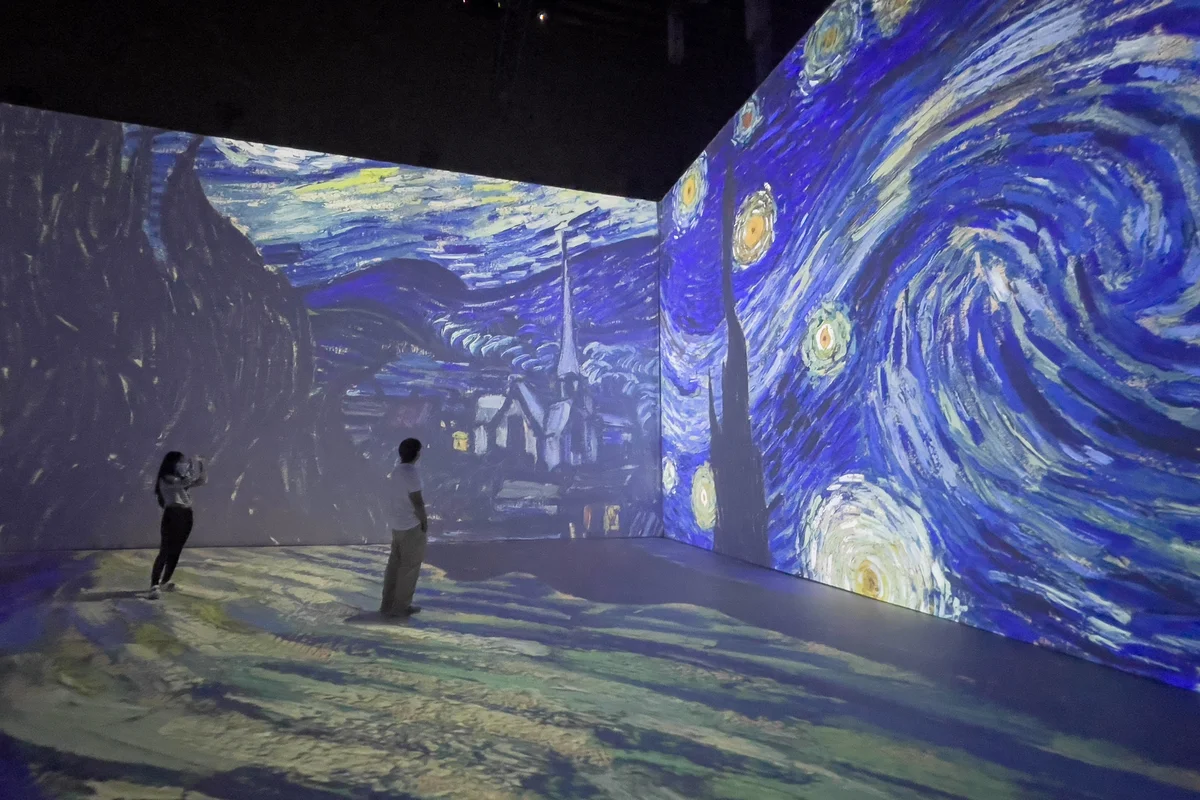
Vincent Van Gogh is credited with saying the following: “I want to touch people with my art. I want them to say ‘he feels deeply, he feels tenderly’.”
In the artist’s namesake exhibit, “Imagine Van Gogh,” his dream has been made a reality. The vibrant colours and heavy brush strokes, for which Van Gogh is known and loved, come to life in a three-dimensional space.
“Imagine Van Gogh” makes use of Image Totale, a technology that projects imagery onto the walls and floor of the exhibition room. Unlike in a traditional museum setting, visitors can move freely throughout the installation — a more pleasant experience than crowding around a tiny frame to catch a glimpse of The Starry Night at MoMA. Here, visitors have space to wander without feeling cramped or rushed, allowing the artwork to guide them (while still adhering to social distancing protocols).
This viewing experience is a departure from the sterility and sanctuary of a museum and is therefore consumed in a different way.
In museums, photography is often prohibited; in “Imagine Van Gogh,” it is expected.
Such a spectacle encourages — almost begs — visitors to document and share their experience on their smartphones. You’ve probably already seen photos and videos of the installation through your mutuals on social media. (After all, if it doesn’t appear on Instagram, it didn’t happen.) Whether this cheapens Van Gogh’s art or makes it more accessible is up for viewers to decide.
Because the exhibit is three-dimensional, you can also witness how others react to the artwork, which is part of the experience itself. When you take a moment to people-watch, it immediately becomes clear how art mimics life, or perhaps, how life mimics art.
The atmosphere of “Imagine Van Gogh” is overwhelming yet intimate. Echoing the visual components of the exhibit, sweeping instrumentals evoke a similar catharsis.
Rows of hanging poster boards line the entrance, where visitors can read about Van Gogh’s life, career and inspiration. Anticipation builds as music drifts in from the exhibition room.
Stepping into the Image Totale, the effect of the music intensifies, abruptly shifting from serene to turbulent. Every now and then a transition would catch me off guard, like when the screen changed from a calm pastoral scene to a striking portrait.
The larger-than-life self-portraits are especially haunting as you become locked into eye contact with the artist himself, creating an unspoken dialogue between the painting and the viewer. This, combined with the images projected onto the bodies of visitors wandering the exhibit, transforms the viewer into the subject.
Van Gogh’s paintings are accompanied by video clips, photographs of nineteenth-century Paris and excerpts from his letters, providing a further glimpse into the artist’s world. It takes about twenty minutes to view all of the images before they loop, leaving room for new insights to be made with each viewing.
Though it is less formal (and more expensive) than visiting a museum, the sheer scale and grandeur of “Imagine Van Gogh” offers a dramatic viewing experience that suits the public’s perception of the artist.
Visitors too can feel deeply, just as Van Gogh had hoped people would see in him when viewing his art.
Vancouver’s “Imagine Van Gogh” installation is located at Canada Place and will be on display until October 15, 2021.


![['auto']](https://storage.googleapis.com/ubyssey/media/renditions/20210701_falsetti_imagine_van_gogh_2.original.jpg)
![['auto']](https://storage.googleapis.com/ubyssey/media/renditions/20210701_falsetti_imagine_van_gogh_3.original.jpg)